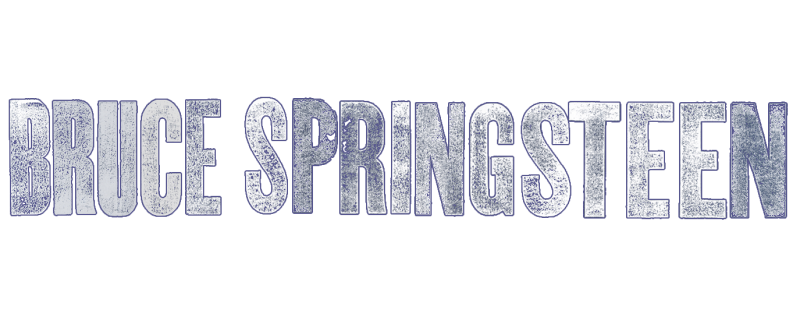Your Rating (Click a star below)
![]()
![]()
![]()
![]()
![]()
![]()
![]()
![]()
![]()
![]()
Total Rating
![]() (3 users)
(3 users)
195,585
813,245
3D Track Thumb![]()
Track Description
Available in:
"My Hometown" is a single by Bruce Springsteen off his Born in the U.S.A. album, that was the record-tying seventh and last top 10 single to come from it, peaking at #6 on the Billboard Hot 100 singles chart. It also topped the U.S. adult contemporary chart, making the song Springsteen's only #1 song on this chart to date. The song is a synthesizer-based, low-tempo number that features Springsteen on vocals.
The song’s lyrics begin with the speaker’s memories of his father instilling pride in the family’s hometown. While it first appears that the song will be a nostalgic look at the speaker’s childhood, the song then goes on to describe the racial violence and economic depression that the speaker witnessed as an adolescent and middle-aged man. The song concludes with the speaker’s reluctant proclamation that he plans to move his family out of the town.
Some of the song's images reference the recent history of Springsteen's own hometown of Freehold Borough, New Jersey, in particular the racial strife in 1960s New Jersey and economic tensions from the same times (i.e. the "textile mill being closed" was the A & M Karagheusian Rug Mill at Center and Jackson Streets of Freehold).
The music video for "My Hometown" was a straightforward video filming of a performance of the song at a Springsteen and E Street Band concert late in the Born in the U.S.A. Tour, eschewing fast-paced cutting for slower montages of Springsteen and various band members. Despite its lack of visual excitement, it still managed substantial MTV airplay.
"My Hometown" was a staple selection on the Born in the U.S.A. Tour, in an arrangement very similar to the album. Springsteen sometimes preceded the song with a story about the tall veterans' monument in front of the courthouse in Freehold; later in the tour he announced gifts to local food banks, union funds, and related activities before playing the song.
"My Hometown" was omitted during the 1988 Tunnel of Love Express Tour, but then appeared at all twenty performances on that year's later Human Rights Now! Tour, where it saluted people trying to take responsibility for their own freedom. It has been played on and off on Springsteen's various tours ever since; it is part of the repertoire of songs that Springsteen pulls out on a given night when he thinks it fits the theme or mood of a concert or location. The song has been performed about 260 times through 2008.

File Hashes
None Found...
Available in:
"My Hometown" is a single by Bruce Springsteen off his Born in the U.S.A. album, that was the record-tying seventh and last top 10 single to come from it, peaking at #6 on the Billboard Hot 100 singles chart. It also topped the U.S. adult contemporary chart, making the song Springsteen's only #1 song on this chart to date. The song is a synthesizer-based, low-tempo number that features Springsteen on vocals.
The song’s lyrics begin with the speaker’s memories of his father instilling pride in the family’s hometown. While it first appears that the song will be a nostalgic look at the speaker’s childhood, the song then goes on to describe the racial violence and economic depression that the speaker witnessed as an adolescent and middle-aged man. The song concludes with the speaker’s reluctant proclamation that he plans to move his family out of the town.
Some of the song's images reference the recent history of Springsteen's own hometown of Freehold Borough, New Jersey, in particular the racial strife in 1960s New Jersey and economic tensions from the same times (i.e. the "textile mill being closed" was the A & M Karagheusian Rug Mill at Center and Jackson Streets of Freehold).
The music video for "My Hometown" was a straightforward video filming of a performance of the song at a Springsteen and E Street Band concert late in the Born in the U.S.A. Tour, eschewing fast-paced cutting for slower montages of Springsteen and various band members. Despite its lack of visual excitement, it still managed substantial MTV airplay.
"My Hometown" was a staple selection on the Born in the U.S.A. Tour, in an arrangement very similar to the album. Springsteen sometimes preceded the song with a story about the tall veterans' monument in front of the courthouse in Freehold; later in the tour he announced gifts to local food banks, union funds, and related activities before playing the song.
"My Hometown" was omitted during the 1988 Tunnel of Love Express Tour, but then appeared at all twenty performances on that year's later Human Rights Now! Tour, where it saluted people trying to take responsibility for their own freedom. It has been played on and off on Springsteen's various tours ever since; it is part of the repertoire of songs that Springsteen pulls out on a given night when he thinks it fits the theme or mood of a concert or location. The song has been performed about 260 times through 2008.
File Hashes
None Found...



 50%
50%